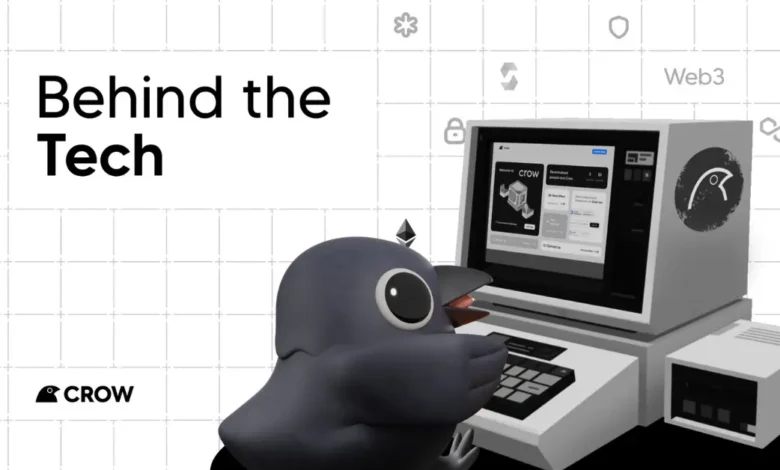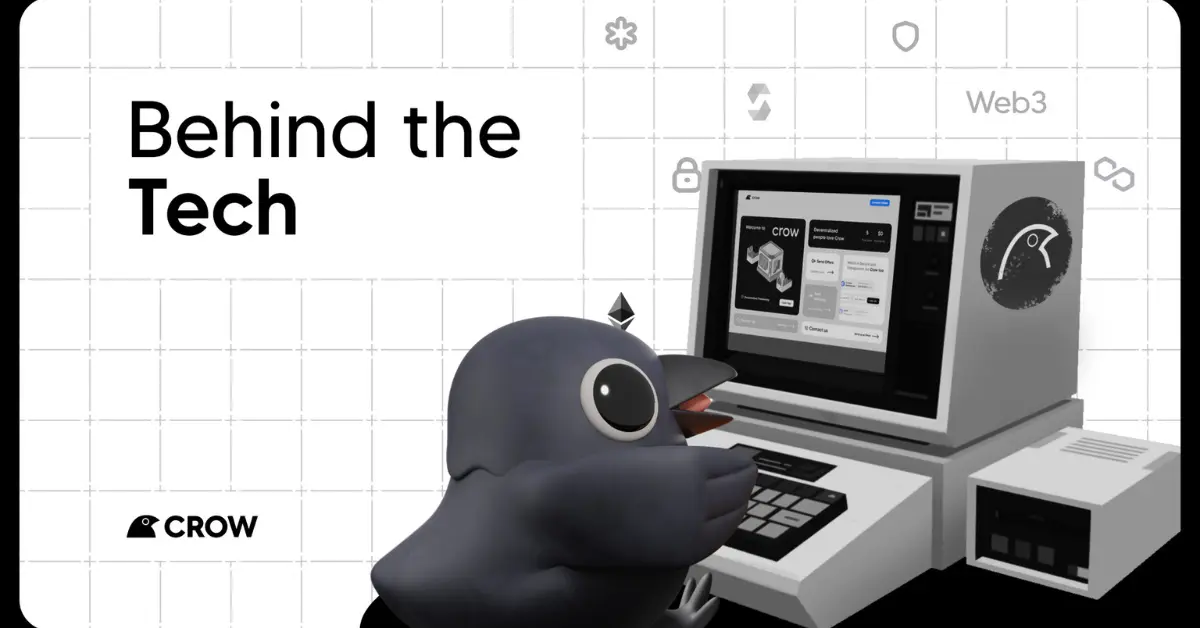Behind the Tech: How Crow’s Blockchain Platform Guarantees Security and Transparency


Introduction to Secure and Transparent Transactions
In the digital age, ensuring the security and transparency of financial transactions is paramount, especially in escrow services where trust is crucial. Crow’s innovative use of blockchain technology on the Ethereum platform redefines escrow services by embedding unmatched security and clear transparency directly into the transaction process. Here, we explore the sophisticated technology behind Crow and how it ensures that every transaction is both secure and transparent.
Blockchain Technology at the Core
Decentralized Ledger Technology: Crow operates on the Ethereum blockchain, known for its robust, tamper-proof nature. This blockchain acts as a decentralized ledger that records all transactions across a network of computers. This setup ensures that no single point of control or failure can compromise the transaction data, significantly enhancing security. Additionally, because this ledger is immutable, once a transaction is recorded, it cannot be altered, providing a clear, undeniable audit trail.
Smart Contract Functionality: At the heart of Crow’s functionality are smart contracts. These are automated contracts with the terms of the agreement between buyer and seller coded directly into them. Unlike traditional contracts, these smart contracts require explicit confirmation from the buyer that the terms of the transaction have been met before releasing funds. This process involves an active validation step by the buyer, ensuring that the release of funds is justified, thereby adding an extra layer of security to the transaction.
Security Through Ethereum’s Protocols
Consensus Mechanisms: Crow benefits from the security features inherent in Ethereum’s consensus mechanisms. Ethereum is currently transitioning from Proof of Work (PoW) to Proof of Stake (PoS), both of which play critical roles in securing the network. These mechanisms ensure that all transactions and the creation of new blocks on the blockchain are validated and agreed upon by multiple nodes. This decentralized validation process prevents fraudulent transactions and ensures no single entity can manipulate the results.
Cryptography: Crow employs advanced cryptographic techniques to secure all transactions. These techniques ensure that each transaction is encrypted and that keys are required to access certain information. This level of encryption not only secures transaction details against hacking attempts but also maintains the confidentiality of user data.
Transparency in Every Step
Transparency is a cornerstone of Crow’s service. Every transaction, from initiation to completion, is recorded on the Ethereum blockchain. Since the blockchain is public, these records are accessible to anyone, allowing users to independently verify the history and details of their transactions at any time. This visibility helps build trust among users as they can see firsthand that the process is functioning as promised without any hidden manipulations.
Here are some Frequently Asked Questions (FAQs) regarding Crow’s blockchain platform, focusing on aspects of security and transparency:
FAQs about Crow’s Blockchain Technology
Q1: How does blockchain technology enhance the security of Crow’s escrow service?
A1: Blockchain technology enhances security by distributing transaction data across a network of nodes. This decentralized approach prevents any single point of failure, making it nearly impossible for hackers to compromise the system. Furthermore, the immutable nature of blockchain ensures that once a transaction is recorded, it cannot be altered, thereby securing the integrity of every transaction.
Q2: What are smart contracts, and how do they work in Crow?
A2: Smart contracts are self-executing contracts with the terms of the agreement directly written into code. In Crow, these contracts automatically manage the escrow process, requiring explicit approval from the buyer before releasing funds to the seller. This ensures that all contractual conditions are met before any money changes hands, enhancing trust and security in transactions.
Q3: Can anyone access the transaction records on Crow?
A3: Yes, Crow’s use of the blockchain means that all transaction records are public and can be accessed by anyone. This transparency allows all parties involved to verify the details of their transactions at any time, ensuring a high level of trust in the platform’s operations.
Q4: How does Crow prevent unauthorized access to transaction details?
A4: While transaction records are public for transparency, sensitive details are protected through cryptographic encryption. This means that personal information is securely encoded, preventing unauthorized access while still maintaining the integrity and transparency of the transaction data on the blockchain.
Q5: What happens if there is a disagreement over a transaction on Crow?
A5: In cases of disputes, Crow provides mechanisms for the buyer and seller to discuss and agree on a resolution. If a common solution cannot be reached independently, Crow’s support team can step in to help mediate and resolve the dispute, ensuring fair outcomes based on the smart contract terms.
Conclusion
Crow’s blockchain platform uses the intrinsic features of Ethereum to offer a secure and transparent environment for conducting escrow transactions. By integrating advanced blockchain technology, smart contracts, and state-of-the-art security protocols, Crow not only protects against traditional vulnerabilities but also provides a transparent system where trust is built through visibility and verifiability. As Crow continues to innovate and improve its platform, it sets new standards for what secure, transparent digital transactions can look like, making it a leading solution in the escrow service market.
To learn more about how Crow Escrow is revolutionizing the escrow industry, visit Crow Escrow’s website and join the future of secure transactions.
Check Our Gitbook
Pitch deck
Disclaimer and Risk Warning
This is a press release post. Coinpedia does not endorse or is responsible for any content, accuracy, quality, advertising, products, or other materials on this page. The image used in this article is for informational purposes only and is provided to us by a third party. Coinpedia should not be held responsible for image copyright issues. Contact us if you have any issues or concerns. Readers should do their research before taking any actions related to the company.



